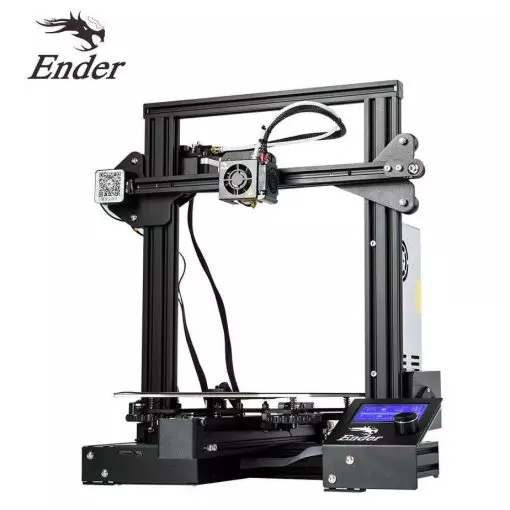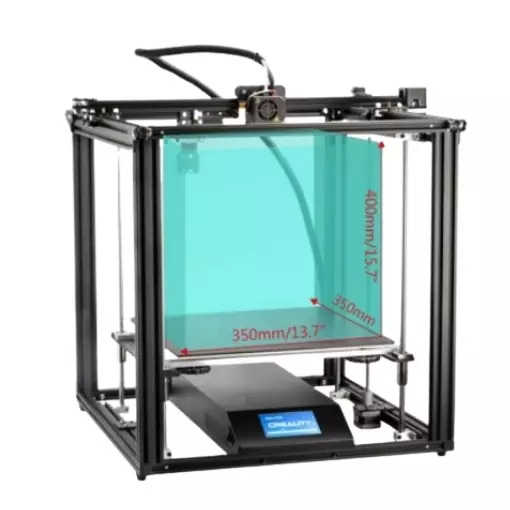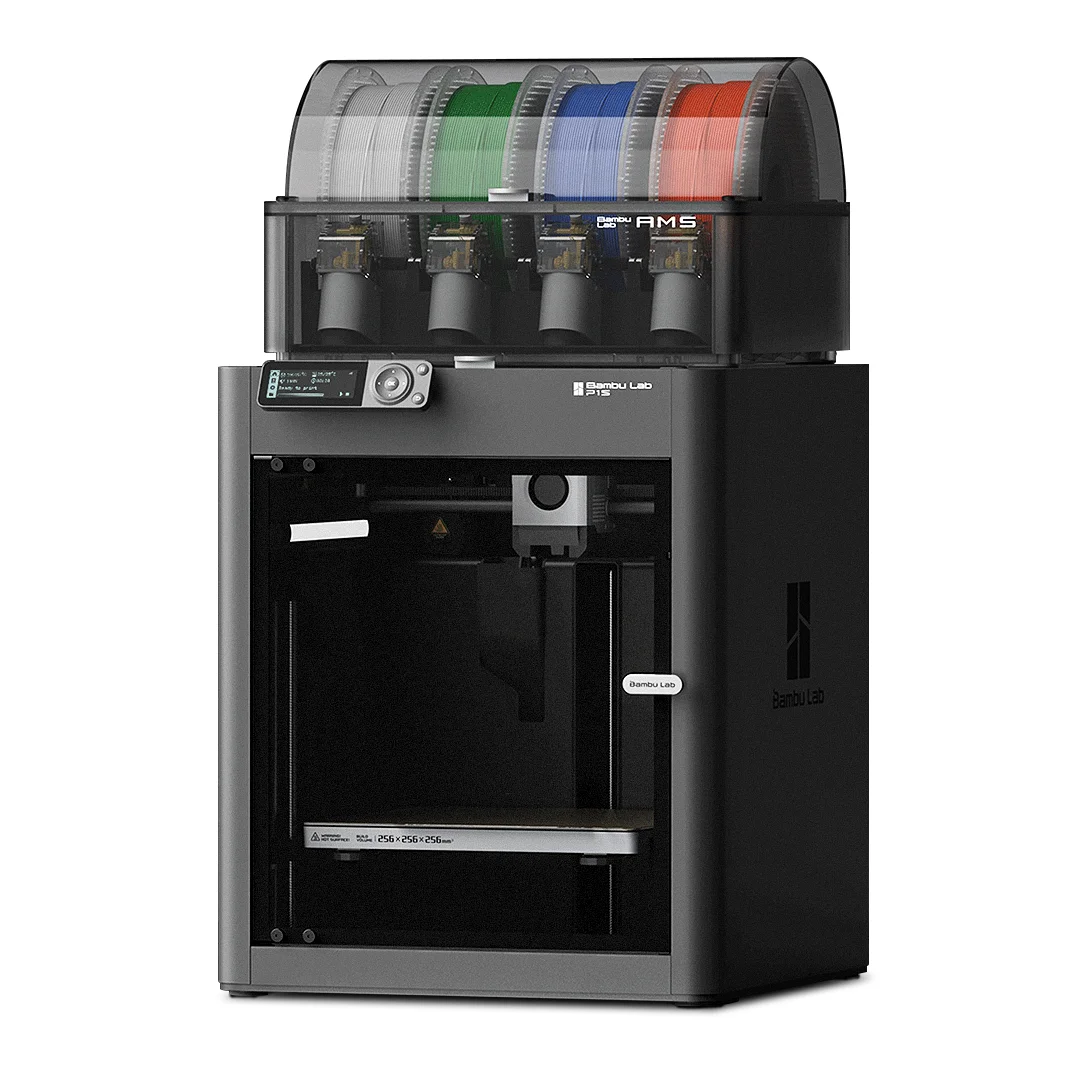Compare Ender 3 vs Ender 5 Plus vs P1S
Comparison between the best 3D printers
Choose the best 3D printer at the best price. The cheapest 3D printers are here.
Buy a 3D printer here with 3D Fila.
 |
 |
 |
|
| Model | Ender 3[BUY Ender 3] |
Ender 5 Plus[BUY Ender 5 Plus] |
P1S[BUY P1S] |
| Printing Material | Filament | Filament | Filament |
| Estimated price | $210,00 | $599,00 | $949,00 |
| Fabricante | Creality 3D | Creality 3D | Bambu Lab |
| Release Year | 2018 | 2019 | 2023 |
| Print Volume [mm] | 220x220x250 | 350x350x400 | 256x256x256 |
| Printer Size [mm] | 440x440x465 | 632x619x666 | 389x389x458 |
| Weight [kg] | 6,62 | 18,2 | 12,95 |
| Power Loss Recovery | NO | YES | YES |
| Enclosed printer | NO | NO | NO |
| Bed Leveling | Manual | Automatic | Automatic |
| Filament End Sensor | NO | YES | YES |
| Bed type | Heated | Heated | Heated |
| Power supply system | Bowden | Bowden | Direct Drive |
| Standard nozzle | 0,4 | 0,4 | 0,4 |
| Maximum Nozzle Temperature [°C] | 255 | 260 | 300 |
| Maximum Bed Temperature [°C] | 110 | 100 | 100 |
| Maximum printing speed [mm/s] | 180 | 180 | 500 |
| Filament holder | YES | YES | YES |
| Camera for supervision | NO | NO | YES |
| Recommended filaments | PLA, TPU, ABS, PETG | PLA, TPU, ABS, PETG | PLA, PETG, TPU, PVA, PA, PA-CF, Nylon, PC |
| Recommended slicers | Cura, Simplify, Slic3r | Cura, Simplify, Slic3r | Bambu Studio, Super Slicer, Cura, Prusa Slicer, Orca |
| Maximum Resolution [mm] | 0,1 | 0,1 | 0,1 |
| Processor | 8 bits | 32 bits | Quad ARM A7 1.2 GHz |
| Display | Mono | Touchscreen TFT 4,3'' | Touchscreen 5'' |
| Power Supply | 24V / 270W | 24V / 504W | 350 W |
| Connectivity | SD / USB | SD / USB | Wifi, Bambu bus, Cartão SD |
| Operating systems | Windows, Mac, Linux | Windows, Mac, Linux | Windows, Linux, Macbook |
| Date of registration in the system | 2021-04-13 | 2021-04-14 | 2024-04-11 |
| Release date | 2018 | 2019 | 2023 |
| Extra features | The Ender 3 V1 is a DIY assembly 3D printer, a sales leader since 2017, standing out for its cost-benefit. With a wide printing capacity, it has a CNC machined structure for precision and stability. It offers high-precision prints with low noise, thanks to its innovative V-profile and pulleys. It has a self-adhesive magnetic platform for easy removal of models and excellent adhesion. The Ender 3 heats up quickly, reaching 100°C in 5 minutes, ideal for agile prints. It includes protection against power failures, allowing you to resume printing after interruptions, saving time and material. | The Ender 5 Plus offers a large print volume (350x350x400 mm) and fast assembly. It includes a BLTouch sensor, but with range limitations. It stands out for its dimensional accuracy, although it requires adjustments to the slicer settings. Despite the noise, its integrated design saves space, and includes features such as a filament sensor and power resumption. Ideal for large projects, it requires refinement in the settings for high-quality prints. | The Bambu Lab P1S stands out for its out-of-the-box practicality, eliminating the need for manual adjustments with automatic calibrations such as bed leveling and vibration compensation. It features multicolor printing capability through the AMS system, allowing up to 16 colors when connecting four AMS units. With an advanced control algorithm, the P1S offers fast printing speeds without sacrificing quality. Equipped with modern features such as filament end sensor, semi-automatic belt tension, direct extruder, welded frame and all-metal hotend, along with a fully enclosed chamber, the P1S promotes a superior printing experience, supporting a wide range of materials. |
| Support for multiple colors and materials (AMS and CFS) | NO | NO | YES |
Notes * |
|||
| Cost-benefit | 6 / 10 | 6 / 10 | 7 / 10 |
| Hardware | 0.5 / 10 | 2 / 10 | 6.4 / 10 |
| Screen | . | . | . |
| Print volume | 3 / 10 | 4 / 10 | 4 / 10 |
| Performance | 1 / 10 | 1 / 10 | 4 / 10 |
| [BUY Ender 3] | [BUY Ender 5 Plus] | [BUY P1S] |
Conclusion |
| In comparing the Ender 3, Ender 5 Plus, and Bambu Lab P1S, it’s essential to evaluate their features, performance, and pricing to determine the best option for different needs and budgets. The **Ender 3**, while the most budget-friendly option, offers a satisfactory printing capacity and basic functionality, making it suitable for beginners and those who prioritize cost-effectiveness. However, it lacks advanced features like power loss recovery and automatic bed leveling, which may limit usability for some users. The **Ender 5 Plus** builds on the capabilities of the Ender 3 with a larger print volume and automatic leveling. Although it is more expensive, it provides improved accuracy and the convenience of a filament sensor. Still, users must be prepared for some noise during operation, and the need for configuration adjustments can be a drawback for less experienced users. On the other hand, the **Bambu Lab P1S** represents the highest price tier and offers the most advanced features, including high printing speeds, automatic calibration, and support for multiple materials. Its modern design and technology provide a superior user experience, especially for those engaged in complex projects or those requiring multi-color printing. The P1S is particularly well-suited for those willing to invest more for enhanced performance and convenience. In conclusion, for users seeking a straightforward and affordable introduction to 3D printing, the Ender 3 is a solid choice. Those who need more functionality and larger print capabilities might consider the Ender 5 Plus as a balanced option. Conversely, for users desiring the latest technology and versatility, the Bambu Lab P1S is the best option, despite its higher cost. Ultimately, the best 3D printer boils down to individual needs, budget constraints, and the intended application. |

